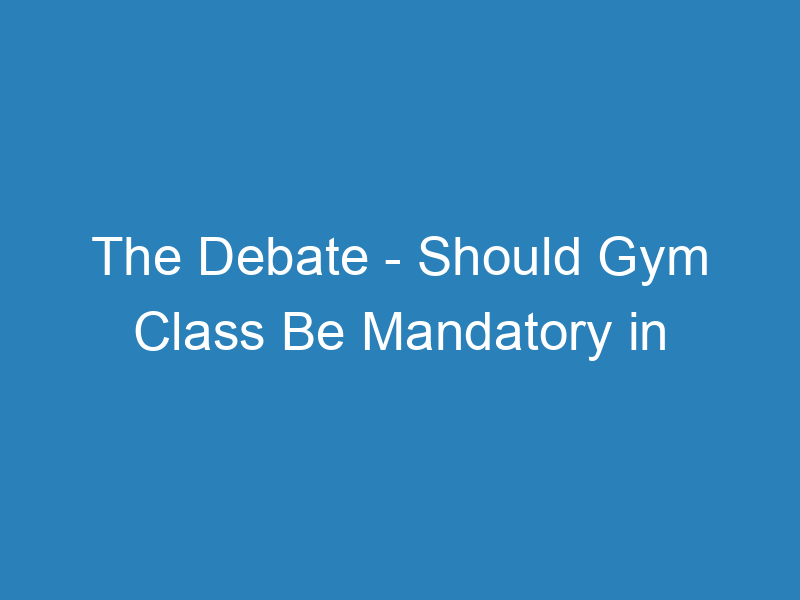Gym class or physical education (PE) has been a staple in school curriculums for decades. It is a time for students to engage in physical activity, learn about the importance of fitness, and develop various skills. However, in recent years, the debate surrounding whether gym class should be mandatory in schools has gained momentum. While some argue that it is crucial for overall health and well-being, others contend that it encroaches on students’ freedom of choice and takes away valuable academic time. Let’s delve into this contentious issue and explore both sides of the argument.
The Case for Mandatory Gym Class
Advocates for mandatory gym class believe that physical education plays a vital role in students’ development. Here are some reasons supporting this viewpoint:
Promotes physical health: Regular exercise is essential for maintaining a healthy lifestyle. By making gym class mandatory, schools ensure that students engage in physical activity on a regular basis, reducing the risk of obesity, diabetes, and other related health issues.
Teaches lifelong fitness habits: Gym class offers an opportunity to introduce students to a variety of physical activities and sports, helping them discover what they enjoy and encouraging them to pursue an active lifestyle outside of school.
Develops motor skills and coordination: Engaging in physical activities enhances students’ motor skills, coordination, and spatial awareness. These skills are not only important for physical fitness but also have positive effects on academic performance and overall mental well-being.
Builds teamwork and discipline: Many physical activities require teamwork and collaboration. Through gym class, students learn how to work together, respect one another’s abilities, and develop important qualities such as discipline, perseverance, and sportsmanship.
The Case Against Mandatory Gym Class
On the other side of the debate, opponents argue that making gym class mandatory imposes constraints on students and takes away valuable academic time. Here are some arguments in favor of non-mandatory gym class:
Encourages freedom of choice: Mandatory gym class can be seen as infringing on students’ individual freedom by forcing them to participate in activities they may not enjoy or excel at. Allowing students to choose physical activities they are passionate about may result in higher levels of engagement and motivation.
Affords more academic time: Schools today face immense pressure to meet rigorous academic standards. Forcing students to dedicate time to gym class can reduce the amount of instructional time available for core subjects, potentially impacting academic achievement.
Flexibility for individual needs: Students have varying physical abilities and needs. Some students may require specialized programs or adaptations to fully participate in physical education. By making gym class non-mandatory, schools can provide more flexibility and individualized options to meet the diverse needs of their students.
Alternative fitness options: With advancements in technology, there is an array of fitness apps, videos, and online resources available. Opponents argue that allowing students to pursue alternative physical activities outside of school may be equally effective in promoting fitness, while also providing them with more autonomy and flexibility.
As with any debate, there are valid points on both sides of the argument. Striking a balance between promoting physical health and respecting individual choice is crucial. However, it is worth noting that many successful school systems around the world have found ways to offer mandatory physical education while dedicating sufficient time to core academic subjects.
In conclusion (without explicitly saying so), the decision of whether gym class should be mandatory in schools ultimately lies in finding the right approach that takes into account the goals of physical education, individual student needs, and the overall educational priorities of the school. By adopting a flexible and inclusive mindset, schools can ensure that students receive the benefits of physical education while still affording them the freedom to explore alternative fitness options.

















